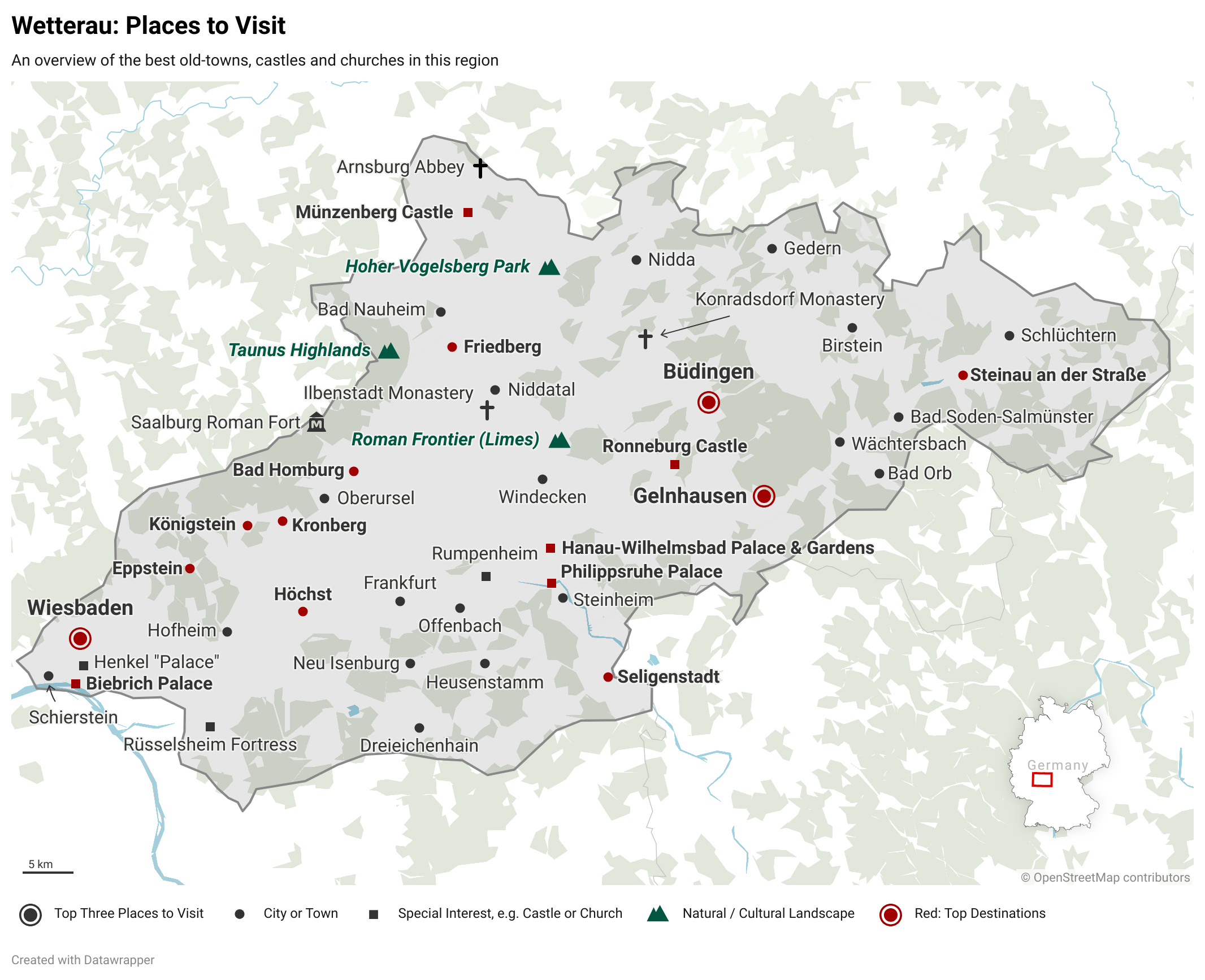The Wetterau was one of the most strategic locations in Europe. It was here that the trade from the East on Via Regia met the Rhenish trade from the west and where the goods of the northern Saxons started their journey on the Main to the Danube. At the center was the Free and Imperial City of Frankfurt, jewel of the Holy Roman Empire. To defend the heartland of the Empire, the medieval Emperors assumed direct control of the region. It is their legacy that shapes the character of the historical heritage in the Wetterau.
Though the city of Frankfurt did not survive the Second World War, the region otherwise retains its rich historical heritage, especially in its Free Cities and Castle Towns. This guide will take you through the main sights to see in the region.
The Historical Wetterau


The Wetter is a small river that flows from the highlands of the Vogelsberg into the Nidda and then into Main. Along with the Kinzig, they formed natural defensive and communication routes that connected the many towns and castles in the region.

My definition of the Wetterau excludes the northern part of the historical region controlled by Hesse-Kassel and Solms families and the towns on the Lahn river. It focuses on the territories of the free cities, the Isenburg family and territories of Mainz and Hesse-Kassel on the Main. This lets us look at the destinations organized into several categories:
- The Territories of the Emperor: This includes the imperial cities Frankfurt,

Exploring the Wetterau
While I have not finished my own exploration of the Wetterau, the best destinations are already clear. Gelnhausen, Büdingen and Seligenstadt have the prettiest towns and Münzenberg and Ronneburg are the coolest castles.
I’m terms of thematic tours, there is enough left for one focused on Medieval architecture and one on Historicist urban planning. There might be enough material for the Renaissance, if one includes a bit of Hessen and Mainz. The loss of Frankfurt’s historical heritage is a massive blow to understanding the region in general.

Places to Visit
Here is my complete list of places that I think would be worth visiting.

Wetterau: List of Places
A complete list of all the places I consider worth visiting.
Selected Bibliography
- Biller, Thomas. 2008. Burgen Im Taunus Und Im Rheingau : Ein Führer Zu Geschichte Und Architektur. Regensburg: Schnell & Steiner.
- Jordan Jörg. Im Schatten Napoleons: Staatsaufbau in Nassau Und Stadtentwicklung in Wiesbaden. Schnell & Steiner, 2014.
- Müller-Urban Kristiane, and Eberhard Urban. Frankfurt Zu Fuß Die schönsten Sehenswürdigkeiten Zu Fuß Entdecken. Societäts-Verlag, 2019.
- Gelnhausen Ein Streifzug Durch Geschichte Und Sehenswürdigkeiten Der Barbarossastadt ; Erarbeitet Im Geschichtsunterricht Durch Schüler Und Lehrer Des Grimmelshausen-Gymnasiums Gelnhausen. Kroeber, 2000.
Image Credits
- All Maps made with Datawrapper
- Historical Map from Wikipedia


